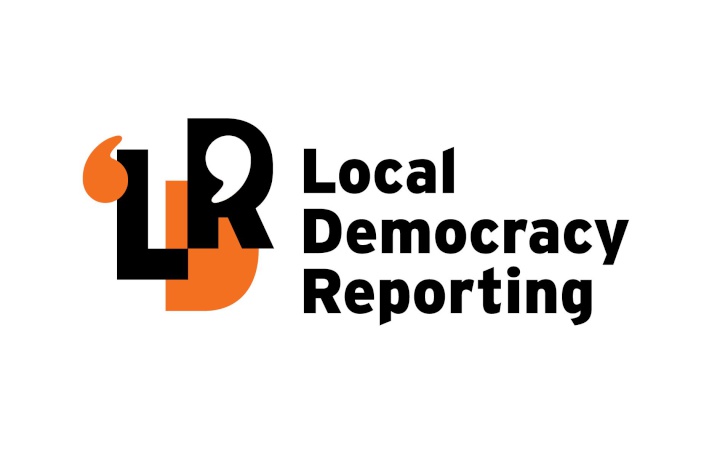A Whanganui school lunch contractor says kaupapa Māori suppliers could be out of the picture under the government’s new free school lunch model.
Associate Education Minister David Seymour says the revamped model will cut $107 million a year from the Ka Ora, Ka Ako school lunch programme by ordering food in bulk for 150,000 intermediate and secondary school students.
A spokesperson for a Trust contracted by the Ministry of Education to supply school lunches in Whanganui said the new model could disadvantage smaller-scale suppliers, such as kaupapa Māori providers.
Kimiora Trust’s Kiritahi Firmin said hapū and iwi have the best model for feeding large numbers of people economically – marae style, serving freshly cooked, healthy meals such as stir-fry with rice.

The school lunch programme, together with the [Ministry of Health] fruit in schools and the [Ministry of Social Development] breakfast programmes, had become “a cash cow” for big food producers and suppliers, Firmin said.
“The big suppliers have the monopoly.”
The Trust was delivering 1500 lunches a week to schools in Whanganui but stopped about a year ago when schools began providing lunches themselves or buying meals from multinationals like Pita Pit, Subway and Compass Group New Zealand.
She said local providers benefit their community by hiring local workers and using seasonal produce grown locally.
Under the school lunch programme, another 85,000 free school lunches go to primary schools and $4 million of the savings will be used to provide morning tea and lunch for up to 10,000 pre-schoolers in some early childhood centres.
The bulk order model budgets $3 per lunch, nearly $6 less per meal than the current $8.62.
According to the Ministry of Education, Whanganui district has 23 schools and kura and more than 3500 students in the Ka Ora, Ka Ako Healthy School Lunches programme.
Nine of the schools and kura – Whanganui Girls’ College, Whanganui Intermediate, Whanganui City College, Keith Street School, Te Kura Kaupapa Māori o Tūpoho, Te Kura o Te Wainui-ā-Rua, and Tawhero, Aranui and Kakatahi schools – provide lunches to their own students.
Whanganui Girls’ College also provides lunches to Carlton, Arahunga and St Marcellin schools, and four external suppliers – multinationals Pita Pit, Subway and Compass Group New Zealand and local supplier East Anndion – provide the remaining 11 schools with lunches.
Pita Pit is the biggest supplier of school lunches in the Whanganui district, providing 878 meals to seven schools on week days.
Whanganui Girls’ College is the next biggest provider, producing 793 school lunches.
Compass Group New Zealand supplies 196 meals to two schools, and Subway (124 lunches) and East Anndion (192 lunches) provide meals to one school each.
Firmin believes providing school meals for $3 per head could be done but, at that price, cash-strapped schools might need to call on parents to volunteer daily to help prepare and serve lunches.
She said school lunches should help tamariki develop healthy relationships with food and understand the importance of kai to wellbeing.
The revamped lunch programme would do nothing to improve the health of tamariki without better education at schools and among whānau on nutrition, cooking and growing fresh produce.
“If you look at what’s being thrown to the pigs, there is too much wasted kai at schools – yet our people are going home to a whare that has no kai or the wrong kind of kai.
“Are we raising the health levels of our people? I don’t think so.
“It’s about changing the palettes of our whānau. Our kids still don’t want to have the vegetables.”
Firmin said the work to improve Māori health needs to start at kohanga reo, where some tamariki continued to arrive with not enough food, the wrong food – like a packet of dried noodles – or no food.
“What’s happened is a good shake-up, because we’ve got to think smarter about where we get our kai, who our suppliers are. We should be growing it. Our schools should be investing in maara kai themselves.”
Brett Ingham, General Manager at PPO (NZ) Limited, trading as Pita Pit NZ, told Local Democracy Reporting he was unable to comment as the Ministry of Education was still working on the finer details of the adjusted model.
“We remain committed to the programme under the current model,” Ingham said.



 Gordon Campbell: On The Left’s Electability Crisis, And The Abundance Ecotopia
Gordon Campbell: On The Left’s Electability Crisis, And The Abundance Ecotopia NZ Police: New Zealand Police team up with Z Energy, NZTA and ACC to remind Kiwis to drive safe this Easter
NZ Police: New Zealand Police team up with Z Energy, NZTA and ACC to remind Kiwis to drive safe this Easter NZCAST: NZCAST Leads Ongoing Cross-Agency Collaboration To Break Down Barriers For Survivors Of State Abuse
NZCAST: NZCAST Leads Ongoing Cross-Agency Collaboration To Break Down Barriers For Survivors Of State Abuse Regional and Unitary Councils Aotearoa: Regional And Unitary Councils Back A Practical FWFP System
Regional and Unitary Councils Aotearoa: Regional And Unitary Councils Back A Practical FWFP System NZ Government: Stay Safe On Our Roads This Easter
NZ Government: Stay Safe On Our Roads This Easter YWCA: Global Push Back Against Gender Equality A Growing Crisis In Aotearoa
YWCA: Global Push Back Against Gender Equality A Growing Crisis In Aotearoa Te Pāti Māori: Ngarewa-Packer - Fast-Tracking Seabed Mining Ignores Māori Opposition And Environmental Precedent
Te Pāti Māori: Ngarewa-Packer - Fast-Tracking Seabed Mining Ignores Māori Opposition And Environmental Precedent


